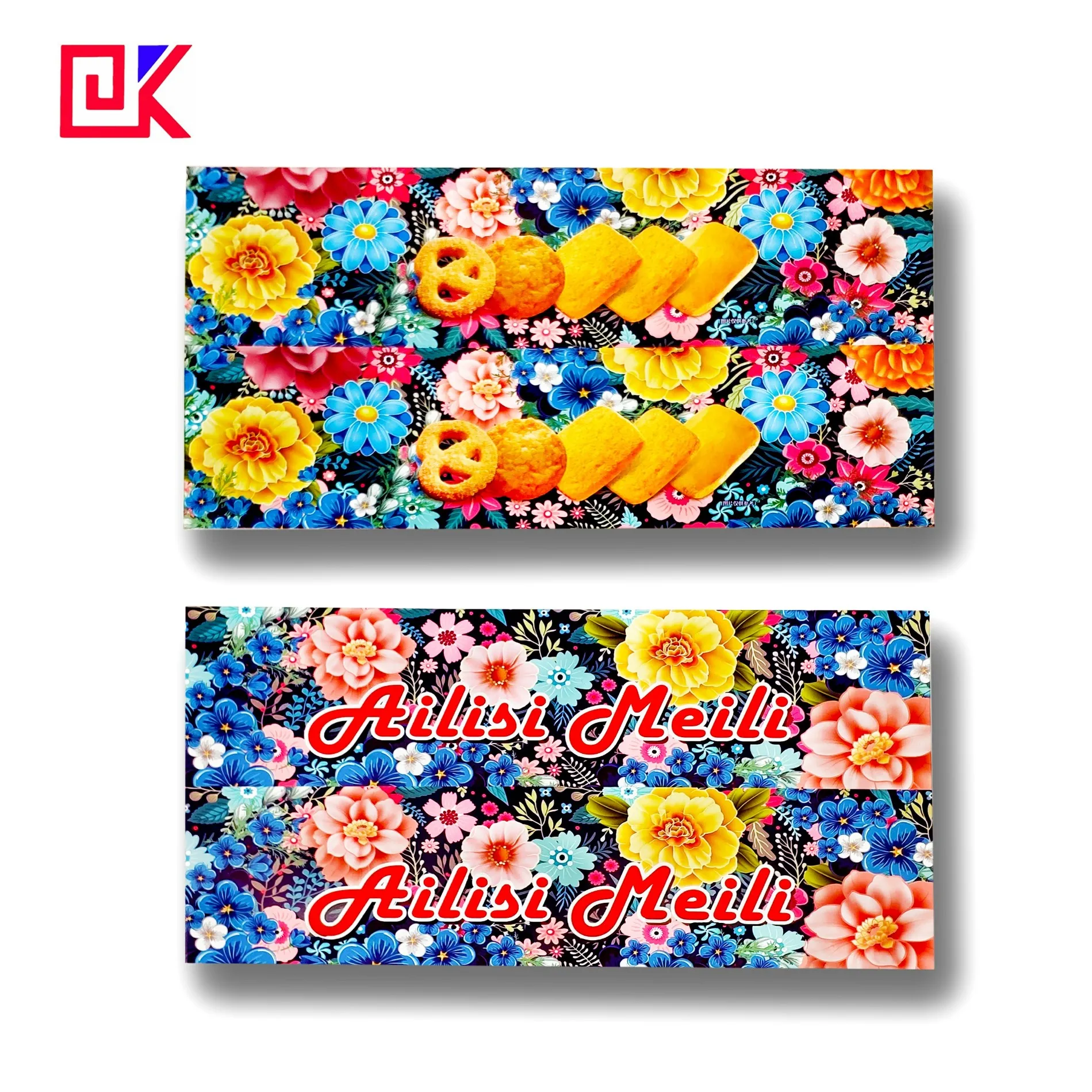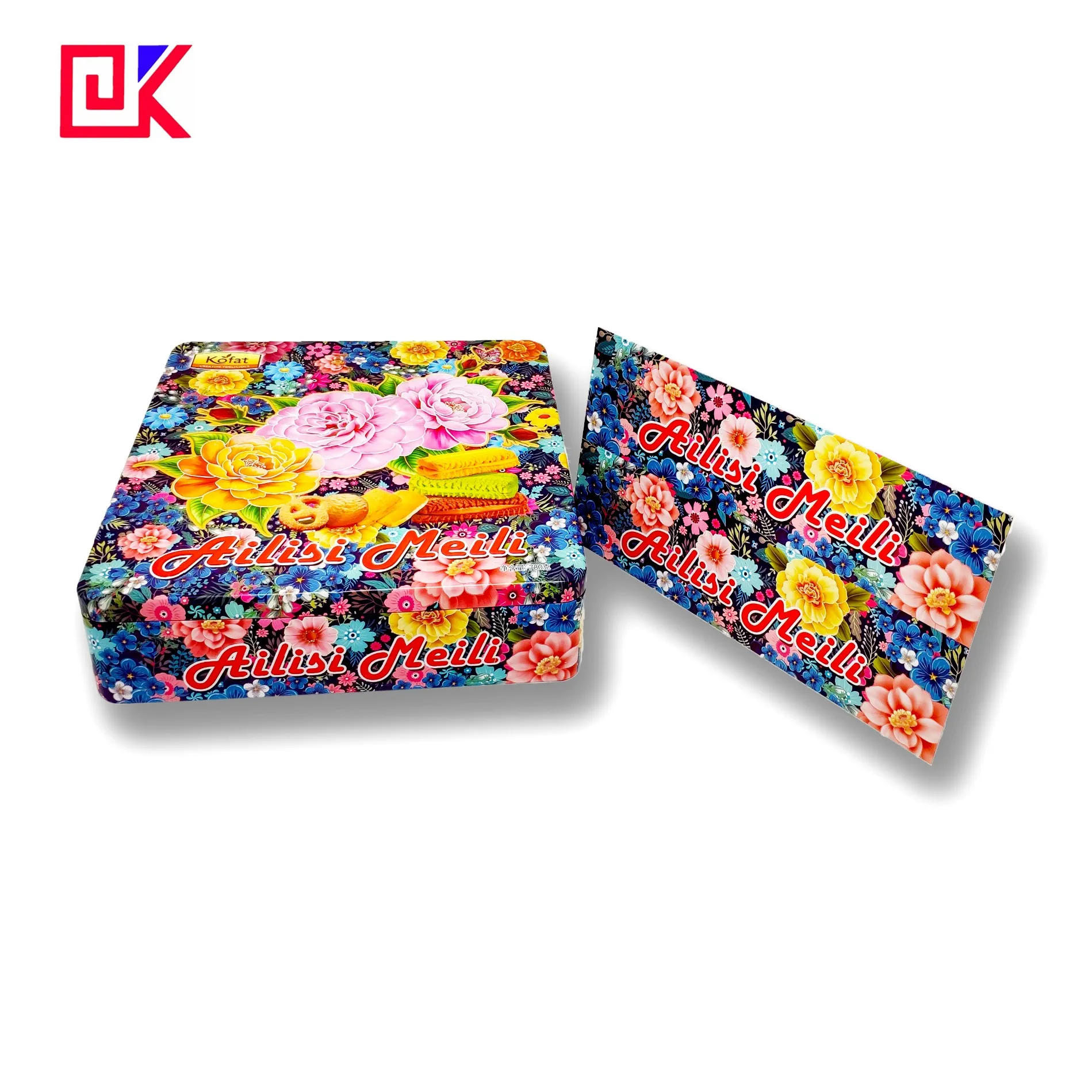In daily life, we often come into contact with various types of cookie tin packaging. These packaging cans not only protect the taste and quality of biscuits, but also have storage, beauty and portability. Many people may be curious about what materials these packaging cans are made of? Will they rust due to time or environmental factors?
With these questions, this article will introduce in detail the manufacturing materials, processes and reasons for whether cookie tin packaging will rust, to help readers gain a deeper understanding of this product that is closely related to daily life.

What is cookie tin packaging? What are its uses?
Cookie tin packaging is a container used to hold, protect and store foods such as biscuits, usually made of metal materials. It not only helps to extend the shelf life of food, but also has moisture-proof, anti-oxidation, anti-extrusion and other functions, thereby maintaining the crispy taste and freshness of biscuits.
Due to its strong sealing performance, this packaging can effectively prevent air and moisture from entering, preventing biscuits from getting damp and deteriorating. Therefore, it is widely used in the storage and transportation of various types of food, especially in the high-end snack market, where exquisite packaging cans are often one of the important factors that attract consumers.
What are the main manufacturing materials for cookie tin packaging?
The common manufacturing material for cookie tin packaging is tinplate, which not only has good mechanical strength and corrosion resistance, but also can provide excellent decorative effects for the can body. In addition, a small number of packaging cans may be made of aluminum or other synthetic materials. The following will focus on the characteristics of tinplate and aluminum, two common materials, and their application in cookie tin packaging.
Tinplate: The preferred material for cookie tin packaging
Tinplate is a metal composite material with a thin layer of tin plated on the surface of cold-rolled steel plate. Because tinplate combines the strength of steel and the anti-corrosion properties of tin, it has become the preferred material for cookie tin packaging. Specifically, tinplate has the following advantages:
● Excellent anti-corrosion performance
The surface of tinplate is plated with a layer of tin, which can effectively isolate moisture and oxygen in the air, prevent the steel plate from rusting, and thus extend the service life of the packaging can. Since tin has stable chemical properties and is not easy to react with moisture and oxygen, it can well prevent the biscuits inside from being oxidized or contaminated.
● Good mechanical strength
The base material of tinplate is cold-rolled steel plate, which has high tensile strength and good ductility. Therefore, the packaging cans made of tinplate can not only effectively protect the biscuits from external extrusion, but also keep the shape of the can beautiful, convenient for storage and transportation.
● Suitable for a variety of printing processes
The surface of tinplate is flat and smooth, which is very suitable for various high-quality printing processes. Therefore, many cookie tin packaging will be printed with exquisite patterns and brand logos to attract consumers' attention and enhance the added value of the product.
● Environmentally friendly and recyclable
Tinplate, as a recyclable metal material, meets the requirements of modern society for environmental protection. The packaging cans made of tinplate can be processed and reused again after recycling, reducing resource waste and environmental pollution.
Aluminum: Lightweight and corrosion-resistant material
In addition to tinplate, a small number of cookie tin packaging also use aluminum as the main material. The main advantages of aluminum cans are their light weight, good corrosion resistance and easy processing. Aluminum has a relatively stable chemical property and can form a dense aluminum oxide protective film in the air, which can effectively prevent further oxidation of aluminum, thereby enhancing the corrosion resistance of the packaging can.
Although aluminum cans are light, they are slightly inferior to tinplate in strength and impact resistance, so they are rarely used in cookie tin packaging that requires high durability. But for products that focus on lightness and corrosion resistance, aluminum is still a good choice.
Other materials: glass and plastic
In addition to metal materials, some high-end or special-purpose cookie tin packaging may also use glass and plastic as raw materials. Glass jars are usually used to show the high-end texture of products. Although they have excellent corrosion resistance, they are not as practical as tinplate and aluminum cans in daily storage and transportation due to their fragility and high weight. Plastic packaging cans are mainly used for lower-end product packaging because of their lightness and low cost, but their durability and corrosion resistance are not as good as metal cans.

What is the manufacturing process of tinplate packaging cans?
The manufacturing process of cookie tin packaging involves multiple steps, from the preparation of raw materials to the production of the final product, each link needs to undergo strict process control to ensure the quality and beauty of the packaging cans.
General manufacturing process of tinplate packaging cans:
1. Preparation of cold-rolled steel sheets
2. Tinning process
3. Cutting and forming
4. Printing and coating
5. Quality inspection and packaging
Preparation of cold-rolled steel sheets
The base material of tinplate is a thin steel sheet that has been cold-rolled, and the thickness is generally between 0.2 and 0.5 mm. Cold-rolled steel sheets have high strength and surface flatness, which are suitable for subsequent tinning and processing. After cleaning and annealing, the steel sheet enters the tinning process.
Tinning process
Tinning is the core process of tinplate manufacturing. The tinning process is divided into two methods: electroplating and hot-dip tinning. At present, most tinplate packaging cans use electroplating. The current in the electrolytic cell makes the tin ions evenly attached to the surface of the steel plate to form an anti-corrosion tin layer. The thickness of the tin layer is usually 1 to 15 grams per square meter, which is adjusted according to the specific application requirements.
Cutting and forming
The tinplate steel sheet after tinning is cut into a size suitable for making packaging cans. According to the design requirements of the can body, the steel sheet is formed into parts such as the can body and can lid through stamping, deep drawing and other processes. These parts are precisely processed to ensure the sealing and structural stability of the can body.
Printing and coating
In order to enhance the visual effect of the packaging can, the surface of the tinplate is often printed. The printing process mainly includes offset printing, pad printing, etc., which can print exquisite patterns and texts on the surface of the tinplate. In addition, in order to further enhance the corrosion resistance and ensure food safety, the inner surface of the packaging can is also coated with a food-grade coating, usually epoxy resin or phenolic resin, to ensure that the biscuits in the can do not come into direct contact with the metal to avoid chemical reactions.
Quality inspection and packaging
After the packaging can is formed, the factory will conduct strict quality inspections on it. The inspection items include the sealing of the can body, pressure resistance, coating integrity and printing quality. Only packaging cans that meet the standards can pass the inspection and finally be put into use on the market.

Will cookie tin packaging rust?
When discussing whether cookie tin packaging will rust, we must first clarify two concepts: rust and corrosion. Rust usually refers to the process in which metals such as iron or steel react with water and oxygen in the air to produce iron oxide. Corrosion refers to the deterioration or damage of any metal material due to chemical or electrochemical reactions.
For cookie tin packaging made of tinplate, its surface is coated with a layer of protective tin. The main function of tin is to prevent steel from contacting with moisture and oxygen in the air, thereby avoiding rust. Therefore, under normal storage and use conditions, tinplate packaging cans generally do not rust.
However, in some special cases, such as when the surface coating or tin layer of the packaging can is damaged, exposing the internal steel, the packaging can may indeed rust.
Factors that may cause tinplate packaging cans to rust:
1. Damage to the tin layer or coating
2. Harsh storage environment
Damage to the tin layer or coating
If the tin layer or coating on the surface of the tinplate is damaged by external forces (such as scratches, impacts, etc.) and the internal steel is exposed, the steel will come into contact with oxygen and moisture in the air in a humid environment, and then an oxidation reaction will occur, causing rust. Therefore, in daily use, the packaging cans should be avoided as much as possible from being bumped or damaged.
Harsh storage environment
Although tinplate packaging cans have good anti-corrosion properties, if they are kept in a humid, high temperature or acid-base environment for a long time, the protective effect of the tin layer and coating may be weakened, thereby increasing the risk of rust on the can body. Therefore, the correct storage method is also one of the important factors to extend the life of the packaging cans.

